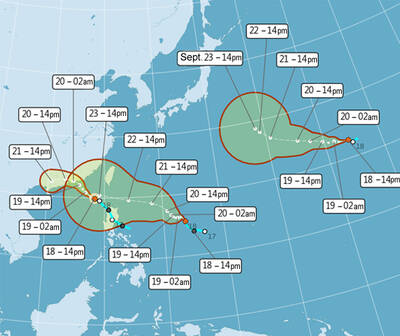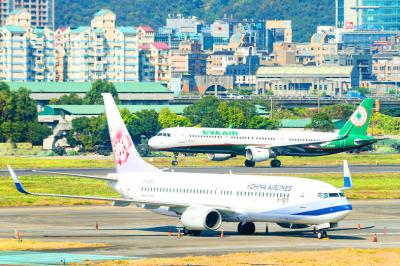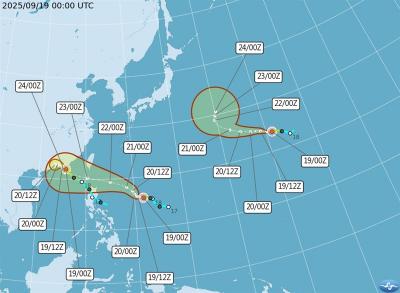Software engineer Ma Wan-chun (馬萬鈞) and a team based at the University of Southern California (USC) were acknowledged by the Academy of Motion Picture Arts and Sciences for their face-digitizing technology, which has been advancing visual effects for a decade.
Ma, who now works as an engineer for Google, on Feb. 9 was awarded the Scientific and Technical Achievement Award along with his colleagues at the 91st Academy Awards for their computer graphics technology developed at the university’s Institute for Creative Technologies.
Their polarized spherical gradient illumination technology is a facial appearance capture method that uses a dome-shaped object called “Light Stage X,” Google said.
When an actor performs inside Light Stage X, they are illuminated by about 300 LEDs and their gestures are captured by cameras from different angles.
The footage is converted into a 3D model that is then used for visual effects, enabling the computer to understand the geometry, pore texture and light properties of the actor’s face, Google said.
Ma said that the technology, which can generate lifelike facial expressions, has transformed the movie industry.
For example, it created an older version of Brad Pitt in The Curious Case of Benjamin Button (2008), brought the Na’vi tribe to the screen in Avatar (2009) and recreated Paul Walker’s performance in Furious 7 (2015) after the actor passed away mid-production.
Ma said that he has always been fascinated by visual effects in movies and video games, such as the diverse alien characters in the Star Wars movie series and the combination of real actors and animated backgrounds in the 1994 game Wing Commander 3.
As the field of computer graphics is still in its infancy in Taiwan, the Graduate Student Study Abroad Program of the National Science Council helped him pursue his studies, Ma said.
Under the program, he went to USC, where his faculty adviser, Paul Debevec, brought Ma into his research team in 2005 to help develop the facial capture system.
Ma said that instead of only researching for his doctoral dissertation, he always wanted to put his expertise into practice, and the work at USC helped him “turn imagination into reality.”
The team’s next step is to transfer the realistic visual effects presented in theaters to smartphones by applying the technology to the fields of augmented reality and virtual reality, Ma said.

NEW AGREEMENT: Malaysia approved imports last year after nearly two years of negotiations and inspections to meet quarantine requirements, officials said Up to 3.6 tonnes of pomeloes from Taiwan cleared Malaysian customs on Friday, in the first shipment of Taiwanese pomeloes to Malaysia. Taiwan-grown pomeloes are popular in domestic and overseas markets for their tender and juicy taste, the Ministry of Agriculture’s Animal and Plant Health Inspection Agency said. The fruit is already exported to Japan, Canada, Hong Kong, Singapore and the Philippines, it added. The agency began applying for access to the Malaysian market in 2023, compiling data on climate suitability, pests and diseases, and post-harvest handling, while also engaging in nearly two years of negotiations with Malaysian authorities and submitting supplementary

PEAK MONTHS: Data showed that on average 25 to 27 typhoons formed in the Pacific and South China seas annually, with about four forming per month in July and October One of three tropical depressions in the Pacific strengthened into a typhoon yesterday afternoon, while two others are expected to become typhoons by today, Central Weather Administration (CWA) forecaster Lee Ming-hsiang (李名翔) said yesterday. The outer circulation of Tropical Depression No. 20, now Typhoon Mitag, has brought light rain to Hualien, Taitung and areas in the south, Lee said, adding that as of 2pm yesterday, Mitag was moving west-northwest at 16kph, but is not expected to directly affect Taiwan. It was possible that Tropical Depression No. 21 would become a typhoon as soon as last night, he said. It was moving in a

Tigerair Taiwan and China Airlines (CAL) today announced that several international flights were canceled or rescheduled due to Typhoon Ragasa. The Central Weather Administration (CWA) has maintained sea and land warnings for the typhoon. Its storm circle reached the Hengchun Peninsula (恆春半島) on Taiwan's southern tip at 11am today. Tigerair Taiwan said it canceled Monday's IT551/IT552 Taoyuan-Da Nang, IT606/IT607 Taoyuan-Busan and IT602 Taoyuan-Seoul Incheon flights. Tomorrow, cancelations include IT603 Seoul Incheon-Taoyuan, as well as flights between Taoyuan and Sapporo, Osaka, Tokyo Narita, Okinawa, Fukuoka, Saga, Tokyo Haneda, Nagoya, Asahikawa and Jeju. On Wednesday, the IT321/IT322 Kaohsiung-Macau round-trip would also be canceled. CAL announced that today's

Three tropical depressions yesterday intensified into tropical storms, with one likely to affect Taiwan as a typhoon, the Central Weather Administration (CWA) said. The three storms, named Mitag, Ragasa and Neoguri, were designated as storms No. 17 to 19 for this year, the CWA said. Projected routes indicate that Ragasa is most likely to affect Taiwan, it said. As of 2am today, Ragasa was 1,370km east-southeast of Oluanpi (鵝鑾鼻) on the southernmost tip of Taiwan. It was moving west-northwest before turning northwest, slowing from 11kph to 6kph, the agency said. A sea warning for Ragasa is unlikely before Sunday afternoon, but its outer rim